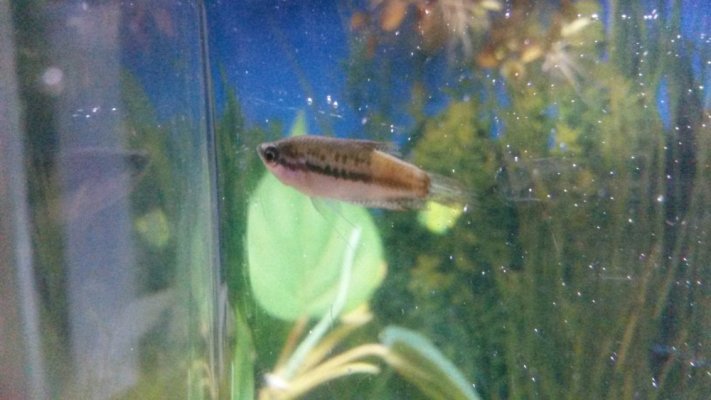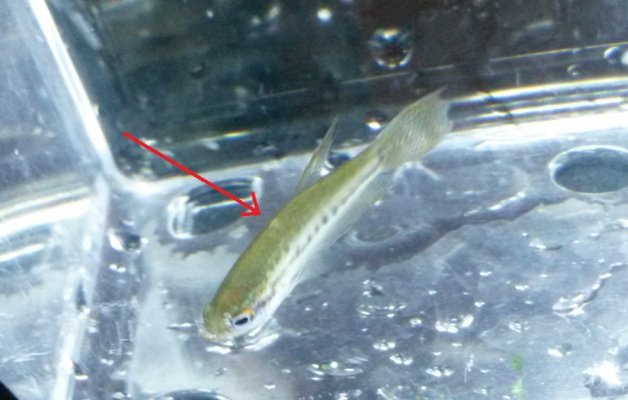Hello,
Need some help IDing this disease... I purchased 12 Sparkling Gourami from an LFS 3 days ago. Upon arriving home about 20 minutes later I inspected the fish and noticed that one was looking a little weak with some discoloration on its tail... I assumed it was bullying while in transit so I separated the injured fish from the rest and added some salt and stress coat to the water. I proceeded to temperature and drip acclimate them over an hour.
I added all of the other 11 gouramis into a 30g QT tank with sponge filter, no substrate and temp set to 78F. I generally do large water changes every day for a week before putting fish into a new tank. The sick fish was left on a hang on back critter container and I had noticed that the discoloration was spreading up the fish's body. Within the hour it had passed.
The next morning I noticed a fish with the same symptoms that started at the base of the tail, clear vertical separation of color that would slowly spread up and the fish would die by the time it reached the middle of the body. This fish was separated and treated with erythromycin and salt before it had passed. Now I've noticed a 3rd fish and have started the same treatment.
At this point I'm guessing that the issue had come from the LFS as my QT tanks tend to be sterilized between new inhabitants and I noticed the sick fish before it even entered my tank. I would like to save my current population of fish if this is some kind of extremely hard to kill outbreak and if any insight could be given.
The photo may be a little unclear but the discolored part is not fuzzy, raised or appear to be attached. The fins are slightly tattered as the fish were overstocked in the LFS tanks and were nipping at each other. This is the 2nd fish in question and it was swimming rather well and the fins were not clamped in early stages. Whatever it is, it progresses fast once the symptoms show and the fish die rather quickly.
Thanks in advance.

Need some help IDing this disease... I purchased 12 Sparkling Gourami from an LFS 3 days ago. Upon arriving home about 20 minutes later I inspected the fish and noticed that one was looking a little weak with some discoloration on its tail... I assumed it was bullying while in transit so I separated the injured fish from the rest and added some salt and stress coat to the water. I proceeded to temperature and drip acclimate them over an hour.
I added all of the other 11 gouramis into a 30g QT tank with sponge filter, no substrate and temp set to 78F. I generally do large water changes every day for a week before putting fish into a new tank. The sick fish was left on a hang on back critter container and I had noticed that the discoloration was spreading up the fish's body. Within the hour it had passed.
The next morning I noticed a fish with the same symptoms that started at the base of the tail, clear vertical separation of color that would slowly spread up and the fish would die by the time it reached the middle of the body. This fish was separated and treated with erythromycin and salt before it had passed. Now I've noticed a 3rd fish and have started the same treatment.
At this point I'm guessing that the issue had come from the LFS as my QT tanks tend to be sterilized between new inhabitants and I noticed the sick fish before it even entered my tank. I would like to save my current population of fish if this is some kind of extremely hard to kill outbreak and if any insight could be given.
The photo may be a little unclear but the discolored part is not fuzzy, raised or appear to be attached. The fins are slightly tattered as the fish were overstocked in the LFS tanks and were nipping at each other. This is the 2nd fish in question and it was swimming rather well and the fins were not clamped in early stages. Whatever it is, it progresses fast once the symptoms show and the fish die rather quickly.
Thanks in advance.


